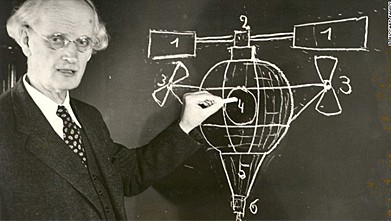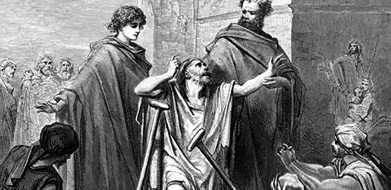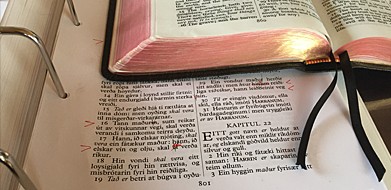Ein skrivar: Hetta útsýni.
So loypur onkur upp og sigur so stívur: útsýni eigur at hava ð!!!!
Og so noyðist man at skriva ð; Hetta útsýnið. Ger man tað ikki, so verður málið ongantíð avgjørt.
Men so siti altso eg her og veit, (sum kanska millum teir einastu í landinum), at tað kann hava ð, men tað nýtist ikki at hava tað.
Samanber við danskt: denne udsigten kann eisini eita denne udsigt. Og bæði eru bundin! Orðið denne bindur bæði. Faktiskt er denne udsigten dupult bundið. Hvat skal tað til?
Dømi um hetta eru:
Henda bók, henda bókin
Hesin bátur, hesin báturin
Hesin maður, hesin maðurin
og so: Hetta útsýni, hetta útsýnið
Sært tú: hetta føri kann líkasovæl skrivast við ella uttan ð, júst sum í hesum føri kann vera við “inum” ending, ella uttan; altso, í hesum føri, ella í hesum førinum. Munurin er júst hin sami. Og hvør er munurin? Eingin!
Tað einasta, sum órógvar fólk, er at orðið endar við i. So halda tey, at eitt ð MÁ vera har. Men so er ei.
Eisini úr íslendskum kann eg vátta tykkum, at þetta útsýnið kann eisini og LÍKA SO VÆL eita þetta útsýni (UTTAN Ð!!!!). Tað er EINGIN munur á teimum, líka sum tað er EINGIN munur á denne udsigten og denne udsigt. Men tá man kemur til føroyskt, so er galdandi EINGIN logikkur, men bert idiotreglur. Slíkt ger meg rættiliga keddan.
Og so royna ØLL at spæla so klók og tykjast vita, (men bara eftir IDIOT-REGLUM), nær eitt ð SKAL vera, og nær eitt ð ikki SKAL vera. Men, sum sagt, her siti eg, (sum fáur í landinum), og reint faktiskt SKILJI og FØLI og VEIT, nær eitt ð eigur at vera, nær tað ikki eigur at vera, og harumframt nær tað KANN vera, men ikki endiliga nýtist at vera.
Samanber: Hetta landið kann LÍKA SO VÆL eita hetta land.
Er hetta land bundið?
Ja, tað er tað!
Orðið hetta bindur tað!
Men tað nýtist tó ikki at hava eina “ið” ending.
Rætt mál er pávindansimeg ikki bara halding av lógum og reglum, skrivað í málsligar lógbøkur, – men so ikki skilja nakaðsumhelst. Tú mást sjálvur skilja uppbygnaðin í málinum, lið fyri lið. Inntil tá ert tú málsliga blindur.
Men fólk flest skilja BARA idiot reglurnar, og neyðhalda um tær, og rópa so kroyst út um rætt og rangt, tí tey minnast lógir, sum tey hava terpað, men uttan at skilja HVÍ tingini eru sum tey eru. Tí skilja tey í veruleikanum EINKIÐ!
Hatta kalli eg kavrotnan býttiskap!
Og ikki vilja tey skilja, at í summum førum kann eitt orð hava ð, men líka so væl ikki.
Hetta fært tú næstan ikki eingong ein lærara at skilja. Mangir av teimum eru opinbært størstu idiotarnir.
Minst til: Rotið hevur rotið ð;
men eisini, at: Hevur elskað hevur elskað ð.






